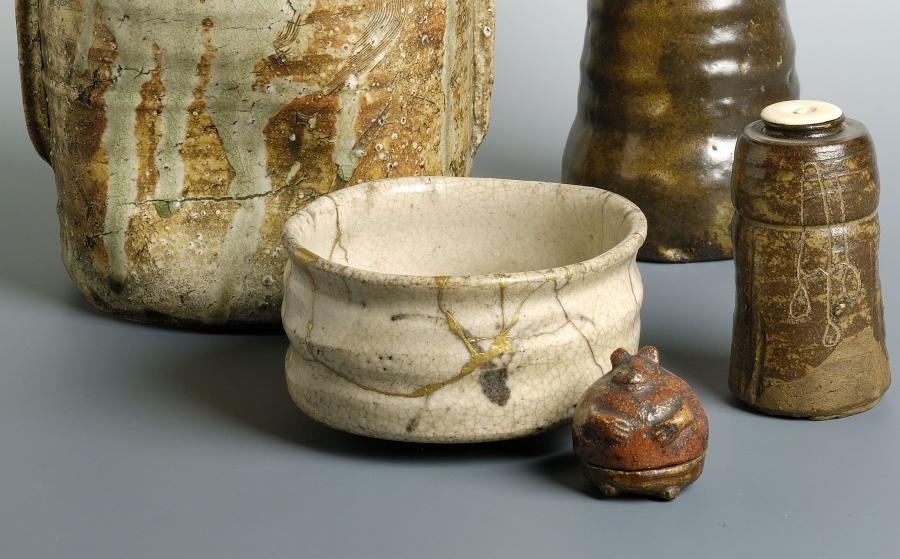The Tea Ceremony
Information sur l’artiste
Japan

Ensemble de céramiques pour la cérémonie du thé, fin XVIe- XIXe siècle.
Image © Lyon MBA - Photo Alain Basset
The collection of ceramics from the Far East, which was assembled by the painter Raphaël Collin and acquired by the museum in 1917, reveals the fascination of enlightened amateurs at the end of the 19th century with Japanese stoneware. Discovered in the West at the Universal Exhibition of 1878, these original objects would profoundly influence Art Nouveau ceramists. Thus, starting in the 1880s, and thanks to his relationship with his Japanese students, R. Collin built a remarkable collection of nearly 450 Chinese and Korean ceramics and Japanese stoneware pieces.
These objects – bowl, incense box, flower vase and water jar – were designed to be used for the tea ceremony (chanoyu). This ceremony developed under the influence of Zen Buddhism and was codified during the 16th century. This stoneware was first produced in the Mino region, in the ancient furnaces of Bizen, Seto and Shigaraki, then at Kyoto, Hagi, Takatori and Karatsu. Ceramics were either covered a glaze that was often thick or fired without a glaze. Shapes are simple and frequently asymmetric. Glazing reveals the clay itself, as well as random effects of firing. These characteristics are considered by the aesthetes of the tea ceremony as emanating from true beauty.
Japan
End 16th – 19th century
Ceramic
Acquired in 1917





